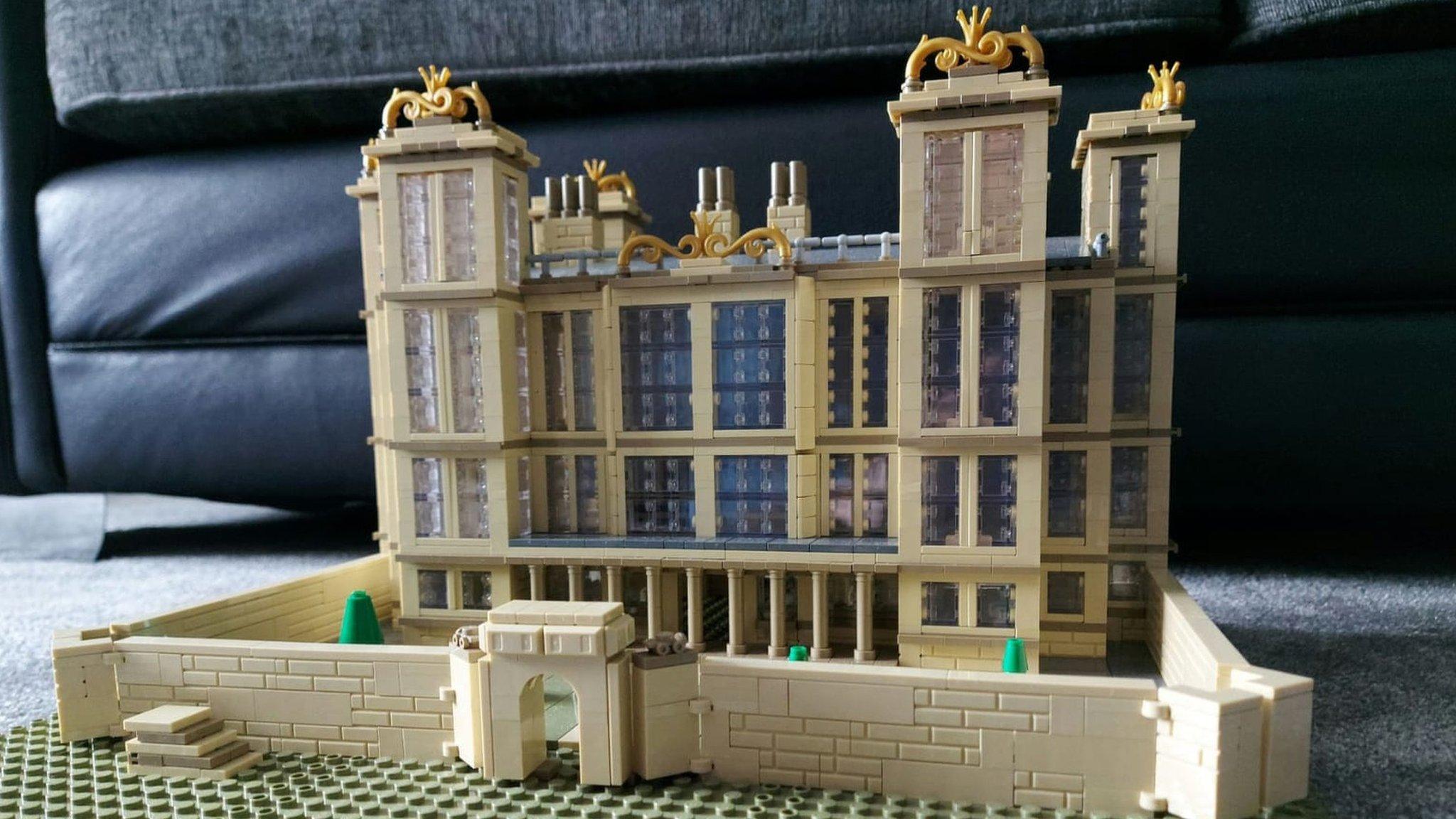Historic 16th Century tapestries unveiled after 24-year project
- Published
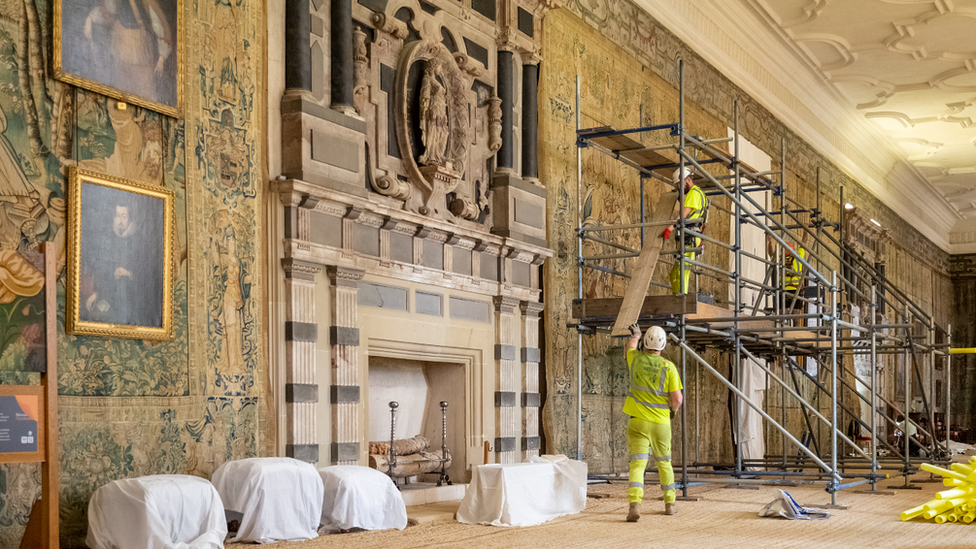
The tapestries are hung in their original position, in the Long Gallery of Hardwick Hall
A unique set of 16th Century tapestries have gone on display after a 24-year, £1.7 million restoration project.
The 13 tapestries, which portray the Old Testament story of Gideon, were bought for Hardwick Hall in Derbyshire in 1592 by its owner Elizabeth Talbot.
Centuries of damage and dirt have been tackled by a team of experts working on one 6m (19.6ft) wall hanging at a time.
The process involved shipping the tapestries to Belgium for wet cleaning before specialist needlework repairs.
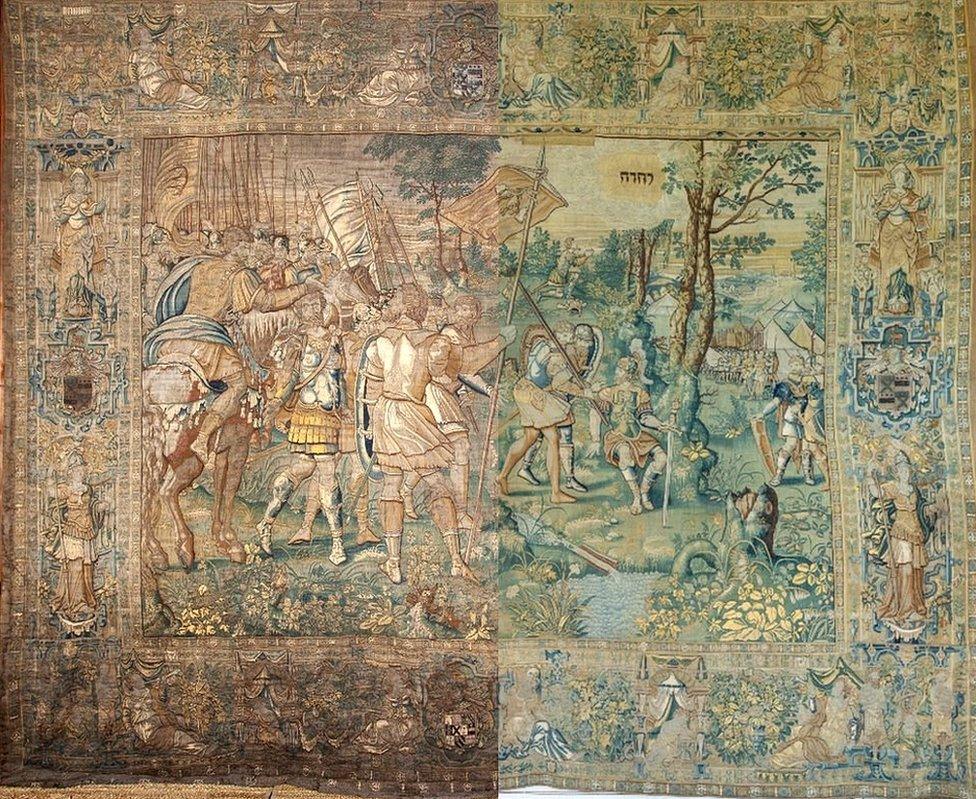
The final panel of the series, before and after restoration
The Gideon tapestries are the largest-surviving set in the UK and were bought by Elizabeth Talbot - known as Bess of Hardwick - to fit out her new palatial home.
She was married four times, became one of the richest women in England and was a friend of Queen Elizabeth I.
The National Trust's senior national curator, Emma Slocombe, said: "These astonishing tapestries have been in the Long Gallery since it was first decorated at the end of the 16th Century. Extraordinarily, that's where they remain.
"Bess collected them and unlike many tapestries, they've never been moved to another home, [been] dispersed or cut up.
"Everything at Hardwick is pre-eminent and these tapestries are unique, an ambitious statement at the heart of an architectural masterpiece.
"As one of the richest women in England, when she planned her decorative schemes, she was thinking about what they could convey about her and her lineage. The Gideon tapestries were designed to be seen, as well as enjoyed privately."
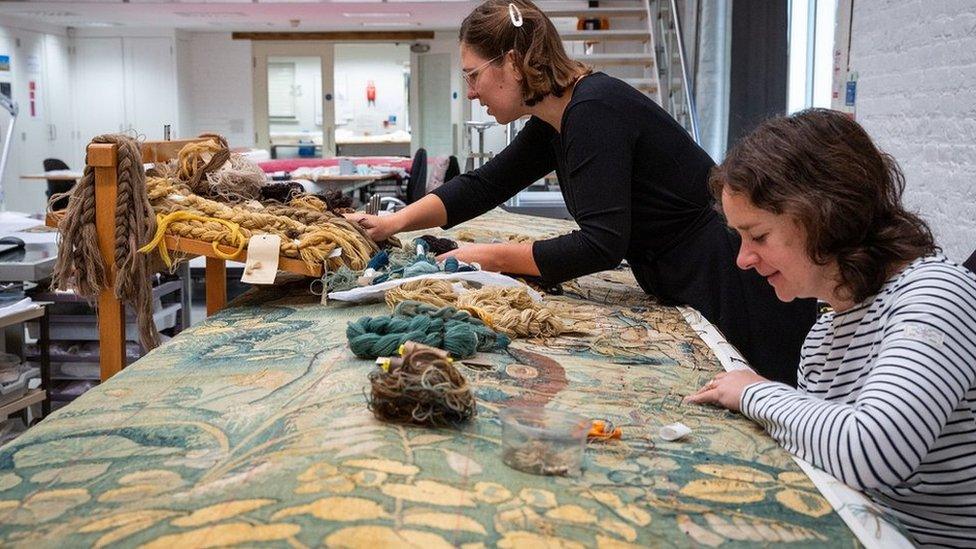
Hand-dyed thread was used to repair and stabilise the 450-year-old textile
National Trust conservators used specialist stitching - with hand-dyed yarns - to repair damaged areas, improve the appearance of 20th Century reweaves, and strengthen the structure of the tapestry.
In total the conservation stitching, lining and reconstruction took 5,470 hours to complete.
Denise Edwards, former Hardwick estate general manager, oversaw the project for 20 years, retiring shortly before it was completed.
She said: "To me it symbolises everything the National Trust stands for, the fact that we as an organisation would invest 24 years, and all that funding and resource, into looking after something that is so special.
"I felt quite emotional and almost cried, you just don't get to do things like this.
"I've had a great career with the National Trust and this is a really, really exciting and fitting end."

Follow BBC East Midlands on Facebook, external, on Twitter, external, or on Instagram, external. Send your story ideas to eastmidsnews@bbc.co.uk, external.
Related topics
- Published25 January 2023
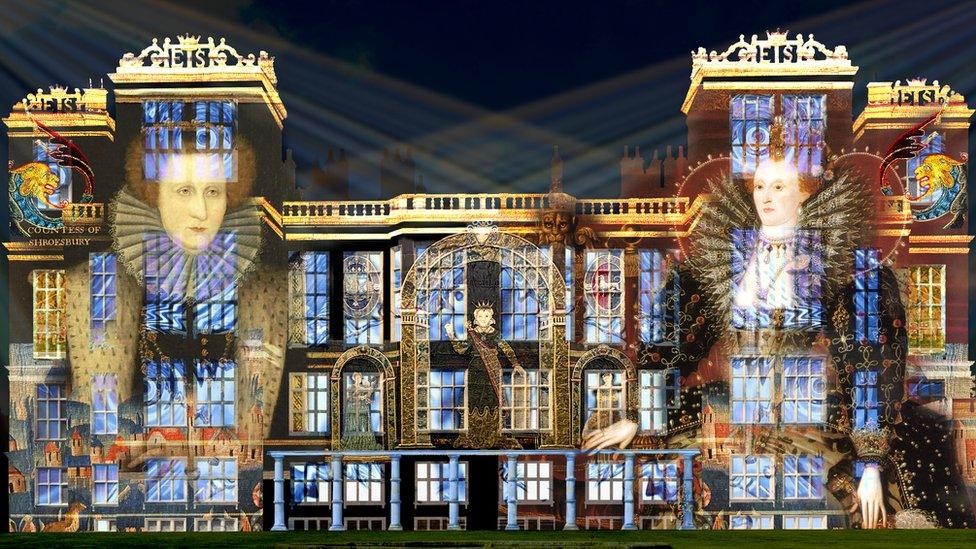
- Published18 October 2022
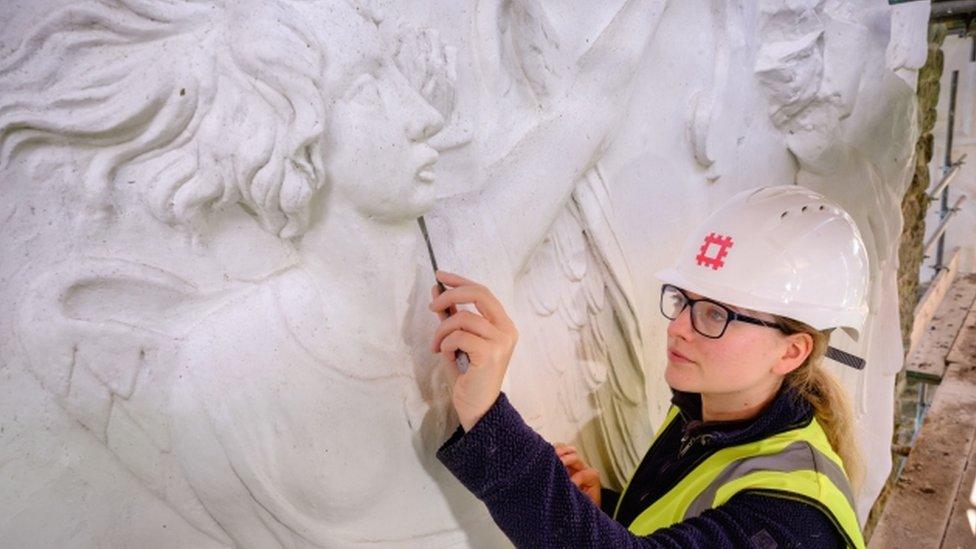
- Published19 August 2022
